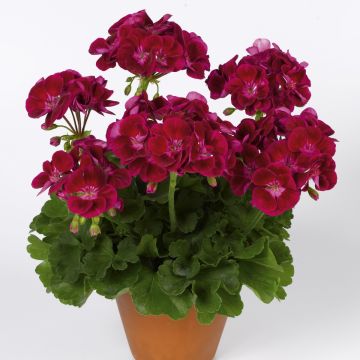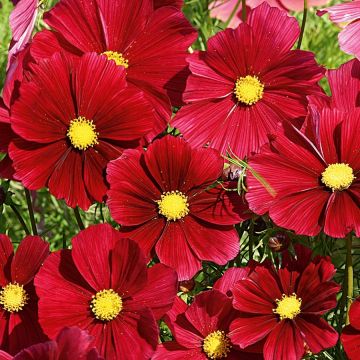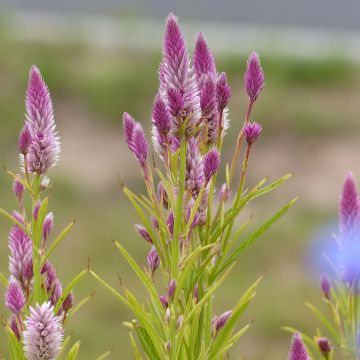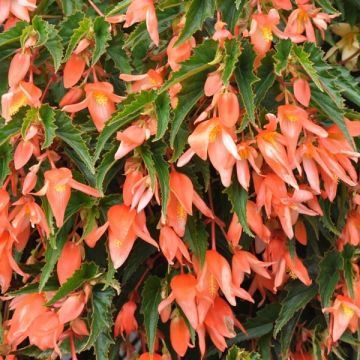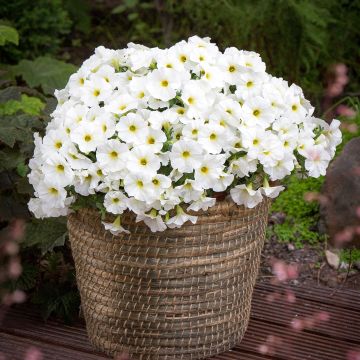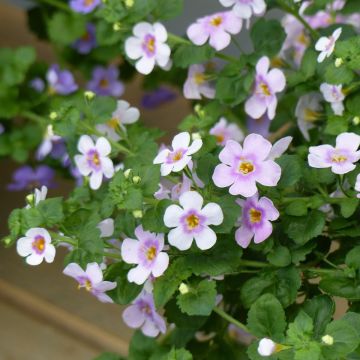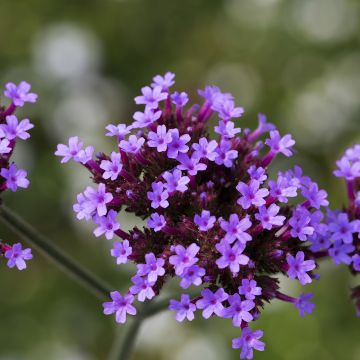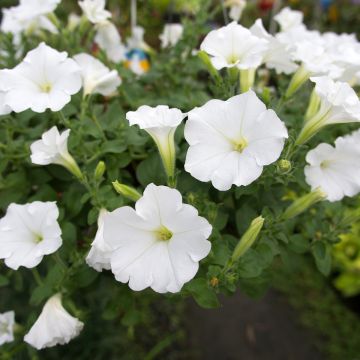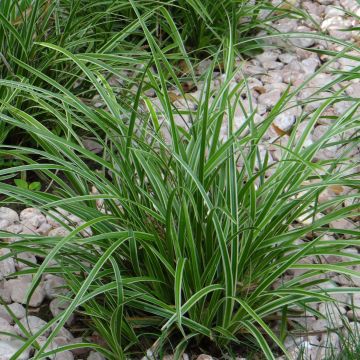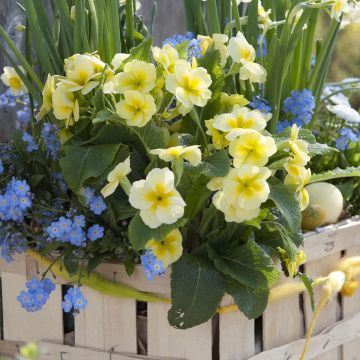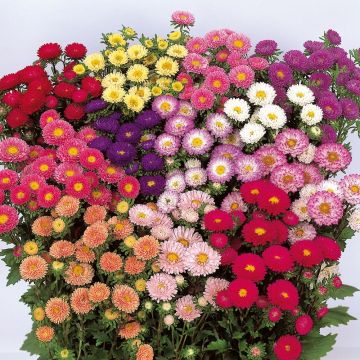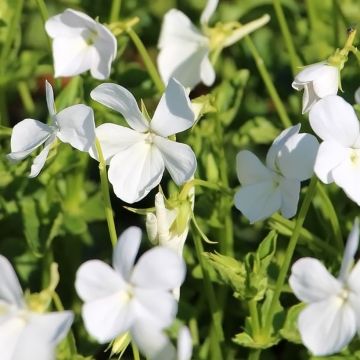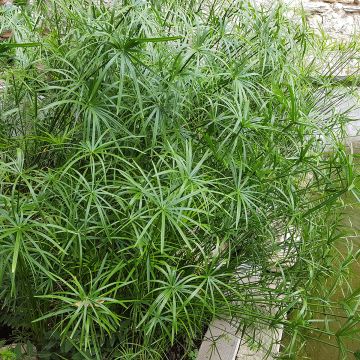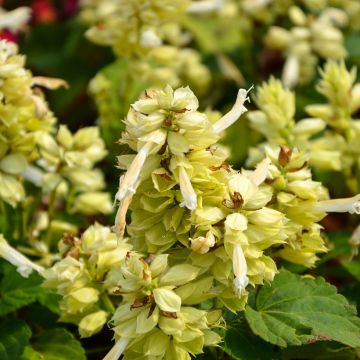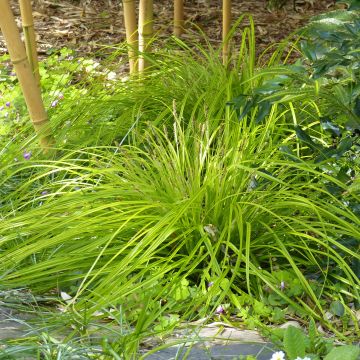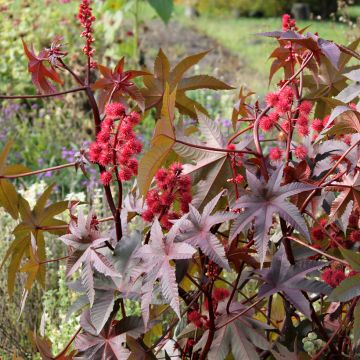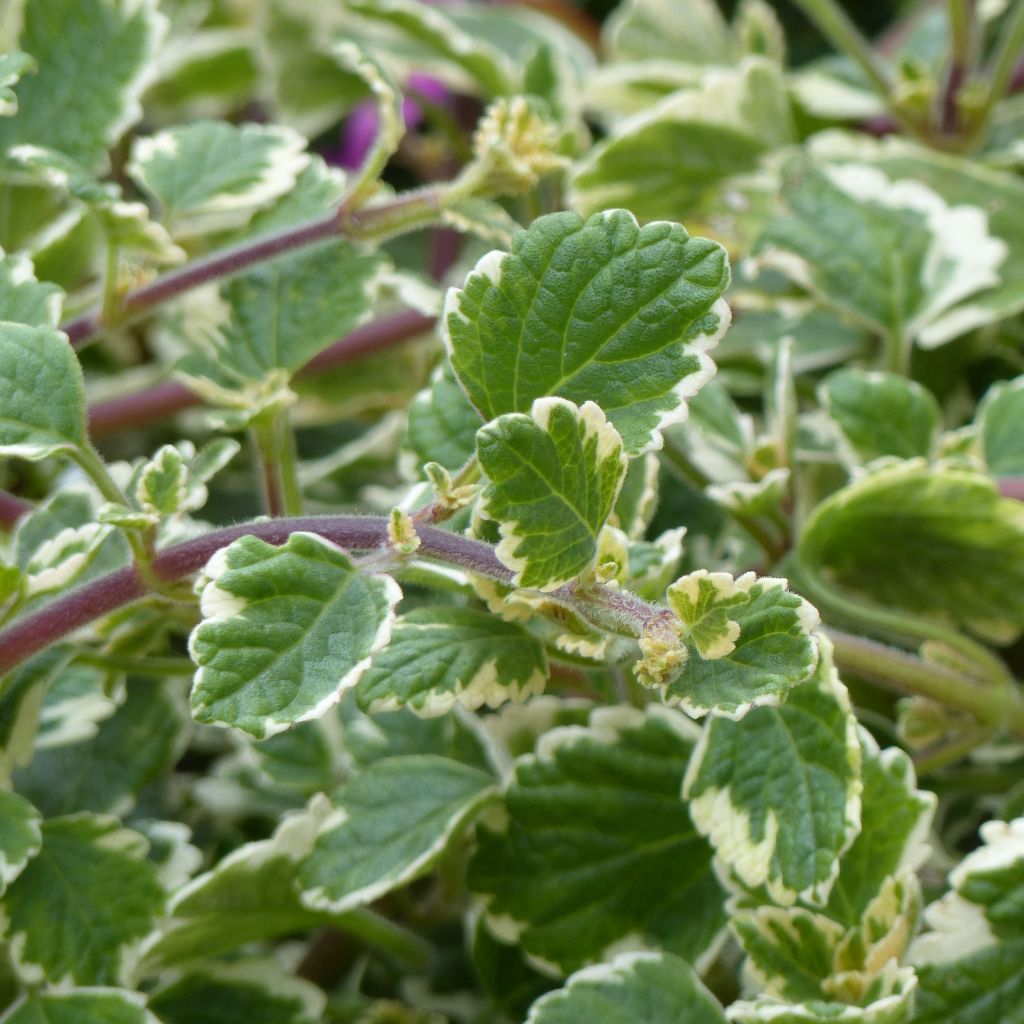

Plectranthus coleoides Variegatus panaché
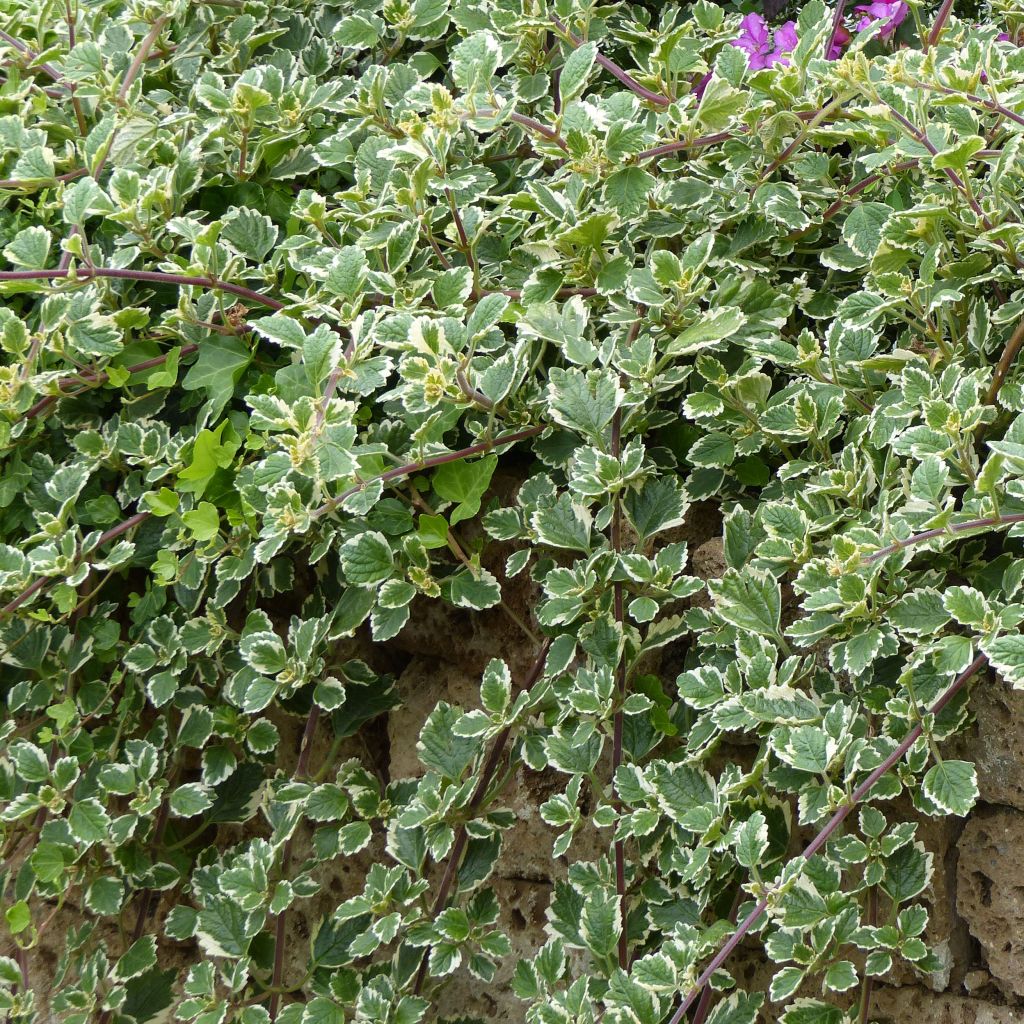

Plectranthus coleoides Variegatus panaché
Plectranthus coleoides 'Variegatus'
Plectranthus coleoides Variegatus
Plectranthus 'Variegated Mintleaf', Plectranthus madagascariensis 'Variegata', Plectranthus coleoides 'Variegatus', Plectranthus madagascariensis 'Variegated Mintleaf'
Mini plugs planted in a planter in May, kept indoors for 1 week for establishment and then moved outdoors in a southwest-facing position. Very heat resistant and beautiful growth.
Sophie, 20/07/2022
This item cannot be shipped to the selected country
Delivery charge from €5.90
More information
Schedule delivery date,
and select date in basket
This plant carries a 6 months recovery warranty
More information
We guarantee the quality of our plants for a full growing cycle, and will replace at our expense any plant that fails to recover under normal climatic and planting conditions.
From €5.90 for pickup delivery and €6.90 for home delivery
Express home delivery from €8.90.

Does this plant fit my garden?
Set up your Plantfit profile →
Description
The Plectranthus coleoides Variegatus, also known as Variegated Swedish Ivy, is a vigorous but very frost-tender tropical perennial grown annually in our climate. Its main assets are gracefully trailing habit and soft evergreen foliage, variegated with green and cream, which releases a spicy aroma reminiscent of pepper when crushed. Its flowering is discreet, in the form of tiny purple flowers. Its spreading and trailing habit is perfect for covering the ground in sunny beds and highlighting companion plants in hanging baskets and containers. A vigorous plant that tolerates all exposures and dry periods.
Plectranthus coleoides Variegatus is a herbaceous perennial plant native to southwest India. It is related to Coleus and belongs to the mint family, as seen from its small bilabiate flowers with elongated lower lips, fleshy square-sectioned stems, and toothed and hairy leaves on the underside. This Plectranthus quickly forms wide cushions reaching a height of 40 cm (16in) and then takes on a trailing habit as its stems elongate. The leaves are oval, green with white cream margins, with a serrated edge, soft to the touch, covered with tiny silver hairs, and rich in fragrant sap. The flowering occurs in August in clusters of 20 cm (8in) high flowers composed of tiny mauve florets. They can be easily removed to promote foliage growth. This plant cannot tolerate temperatures below four °C (39.2°F) but is easily grown indoors in a bright room.
Plectranthus coleoides Variegatus is an essential plant for hanging baskets and flower pots. It has a great effect when combined with the lush blooms of petunias, surfinias, ivy geraniums, anthemis, heliotropes, or even alongside lantanas. This fast-growing plant can form a beautiful ground cover in the summer in front of begonia, cleome, and cosmos borders.
Our plug plants are designed for experienced gardeners. When you receive them, we suggest that you repot and store them in a safe place, like a veranda, greenhouse, or cold frame. Keep the temperature above 14°C (57.2°F) for a few weeks before transferring them outside. Wait until the risk of frost has passed before moving them outdoors.
Report an error about the product description
Plectranthus coleoides 'Variegatus' in pictures
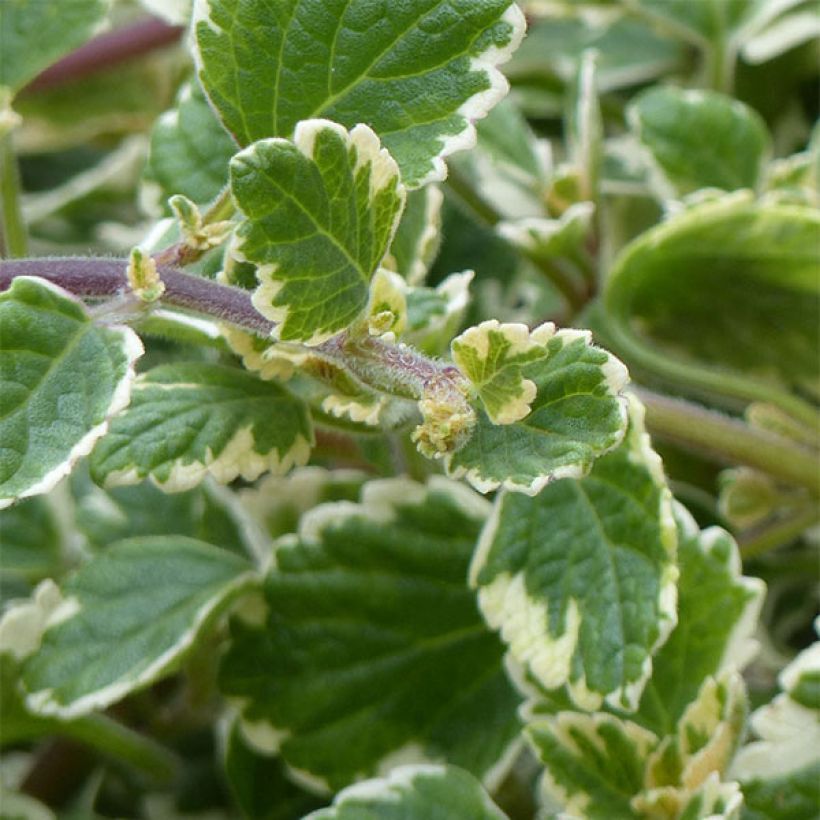

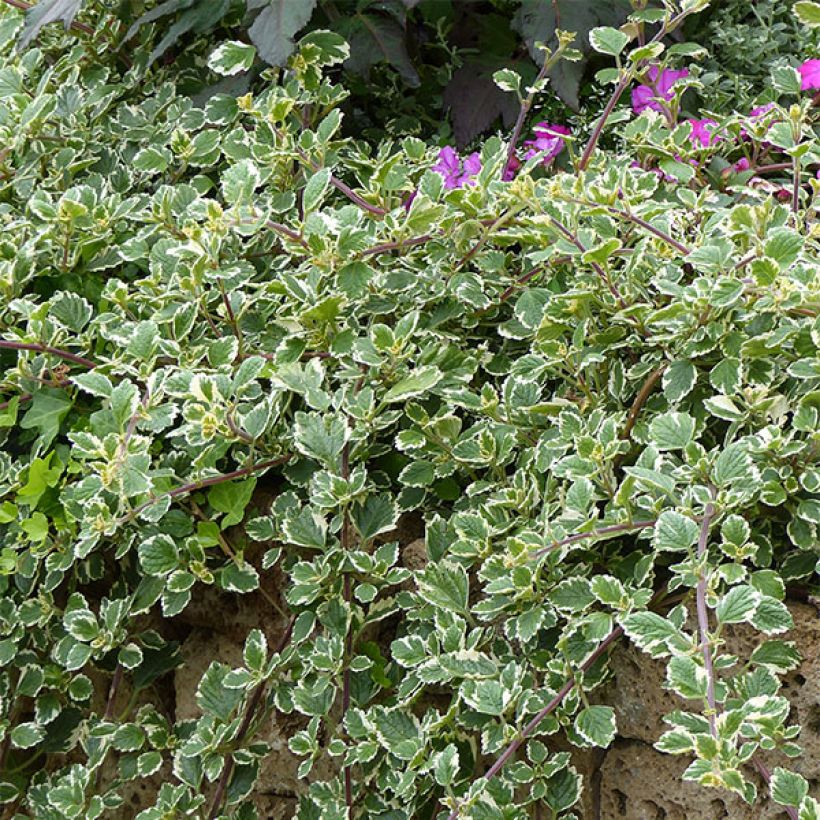

Flowering
Foliage
Plant habit
Botanical data
Plectranthus
coleoides
Variegatus
Lamiaceae
Plectranthus 'Variegated Mintleaf', Plectranthus madagascariensis 'Variegata', Plectranthus coleoides 'Variegatus', Plectranthus madagascariensis 'Variegated Mintleaf'
India
Other Annuals A to Z
Planting and care
The Plectranthus coleoides 'Variegatus' prefers very sunny exposures but also tolerates shade and is slightly acidic to neutral, well-drained soil. You can plant it in April, after the last frost, in a pot, planter, hanging basket, or even in the ground. It is a very sensitive plant that cannot tolerate temperatures below 4°C. You can bring it outside in May and back inside a veranda or a bright room before the first frost. If the plant stays indoors during winter, watering should be reduced. The variegated plectranthus can be easily propagated at any time of the year by stem cuttings (15 to 20 centimetres (6 to 8 inches) in length). It requires little maintenance: regularly pinch the stems to keep the plant compact and remove the flowers if necessary.
Planting period
Intended location
Care
-
, onOrder confirmed
Reply from on Promesse de fleurs
Plug plants - Annuals
Haven't found what you were looking for?
Hardiness is the lowest winter temperature a plant can endure without suffering serious damage or even dying. However, hardiness is affected by location (a sheltered area, such as a patio), protection (winter cover) and soil type (hardiness is improved by well-drained soil).

Photo Sharing Terms & Conditions
In order to encourage gardeners to interact and share their experiences, Promesse de fleurs offers various media enabling content to be uploaded onto its Site - in particular via the ‘Photo sharing’ module.
The User agrees to refrain from:
- Posting any content that is illegal, prejudicial, insulting, racist, inciteful to hatred, revisionist, contrary to public decency, that infringes on privacy or on the privacy rights of third parties, in particular the publicity rights of persons and goods, intellectual property rights, or the right to privacy.
- Submitting content on behalf of a third party;
- Impersonate the identity of a third party and/or publish any personal information about a third party;
In general, the User undertakes to refrain from any unethical behaviour.
All Content (in particular text, comments, files, images, photos, videos, creative works, etc.), which may be subject to property or intellectual property rights, image or other private rights, shall remain the property of the User, subject to the limited rights granted by the terms of the licence granted by Promesse de fleurs as stated below. Users are at liberty to publish or not to publish such Content on the Site, notably via the ‘Photo Sharing’ facility, and accept that this Content shall be made public and freely accessible, notably on the Internet.
Users further acknowledge, undertake to have ,and guarantee that they hold all necessary rights and permissions to publish such material on the Site, in particular with regard to the legislation in force pertaining to any privacy, property, intellectual property, image, or contractual rights, or rights of any other nature. By publishing such Content on the Site, Users acknowledge accepting full liability as publishers of the Content within the meaning of the law, and grant Promesse de fleurs, free of charge, an inclusive, worldwide licence for the said Content for the entire duration of its publication, including all reproduction, representation, up/downloading, displaying, performing, transmission, and storage rights.
Users also grant permission for their name to be linked to the Content and accept that this link may not always be made available.
By engaging in posting material, Users consent to their Content becoming automatically accessible on the Internet, in particular on other sites and/or blogs and/or web pages of the Promesse de fleurs site, including in particular social pages and the Promesse de fleurs catalogue.
Users may secure the removal of entrusted content free of charge by issuing a simple request via our contact form.
The flowering period indicated on our website applies to countries and regions located in USDA zone 8 (France, the United Kingdom, Ireland, the Netherlands, etc.)
It will vary according to where you live:
- In zones 9 to 10 (Italy, Spain, Greece, etc.), flowering will occur about 2 to 4 weeks earlier.
- In zones 6 to 7 (Germany, Poland, Slovenia, and lower mountainous regions), flowering will be delayed by 2 to 3 weeks.
- In zone 5 (Central Europe, Scandinavia), blooming will be delayed by 3 to 5 weeks.
In temperate climates, pruning of spring-flowering shrubs (forsythia, spireas, etc.) should be done just after flowering.
Pruning of summer-flowering shrubs (Indian Lilac, Perovskia, etc.) can be done in winter or spring.
In cold regions as well as with frost-sensitive plants, avoid pruning too early when severe frosts may still occur.
The planting period indicated on our website applies to countries and regions located in USDA zone 8 (France, United Kingdom, Ireland, Netherlands).
It will vary according to where you live:
- In Mediterranean zones (Marseille, Madrid, Milan, etc.), autumn and winter are the best planting periods.
- In continental zones (Strasbourg, Munich, Vienna, etc.), delay planting by 2 to 3 weeks in spring and bring it forward by 2 to 4 weeks in autumn.
- In mountainous regions (the Alps, Pyrenees, Carpathians, etc.), it is best to plant in late spring (May-June) or late summer (August-September).
The harvesting period indicated on our website applies to countries and regions in USDA zone 8 (France, England, Ireland, the Netherlands).
In colder areas (Scandinavia, Poland, Austria...) fruit and vegetable harvests are likely to be delayed by 3-4 weeks.
In warmer areas (Italy, Spain, Greece, etc.), harvesting will probably take place earlier, depending on weather conditions.
The sowing periods indicated on our website apply to countries and regions within USDA Zone 8 (France, UK, Ireland, Netherlands).
In colder areas (Scandinavia, Poland, Austria...), delay any outdoor sowing by 3-4 weeks, or sow under glass.
In warmer climes (Italy, Spain, Greece, etc.), bring outdoor sowing forward by a few weeks.


































